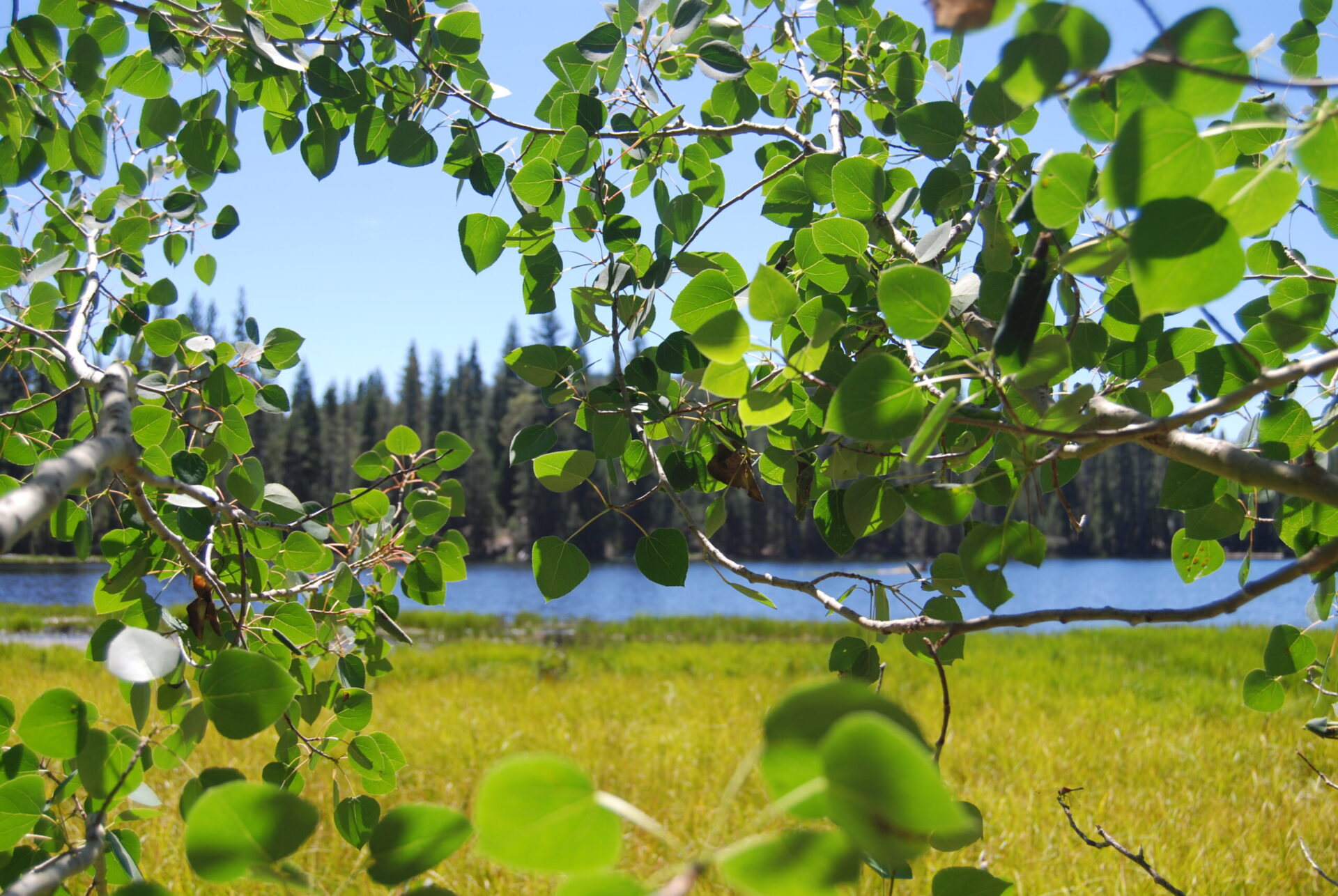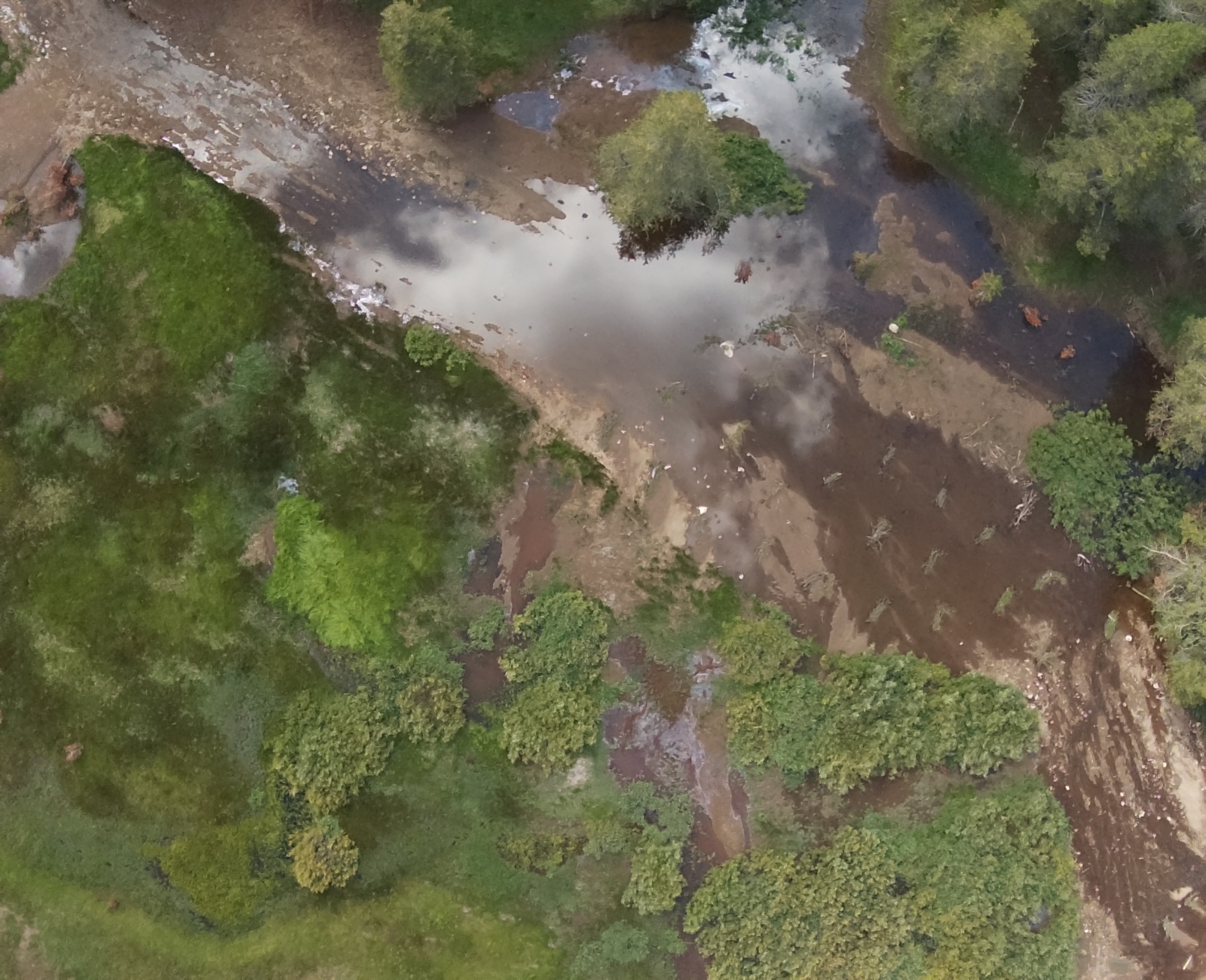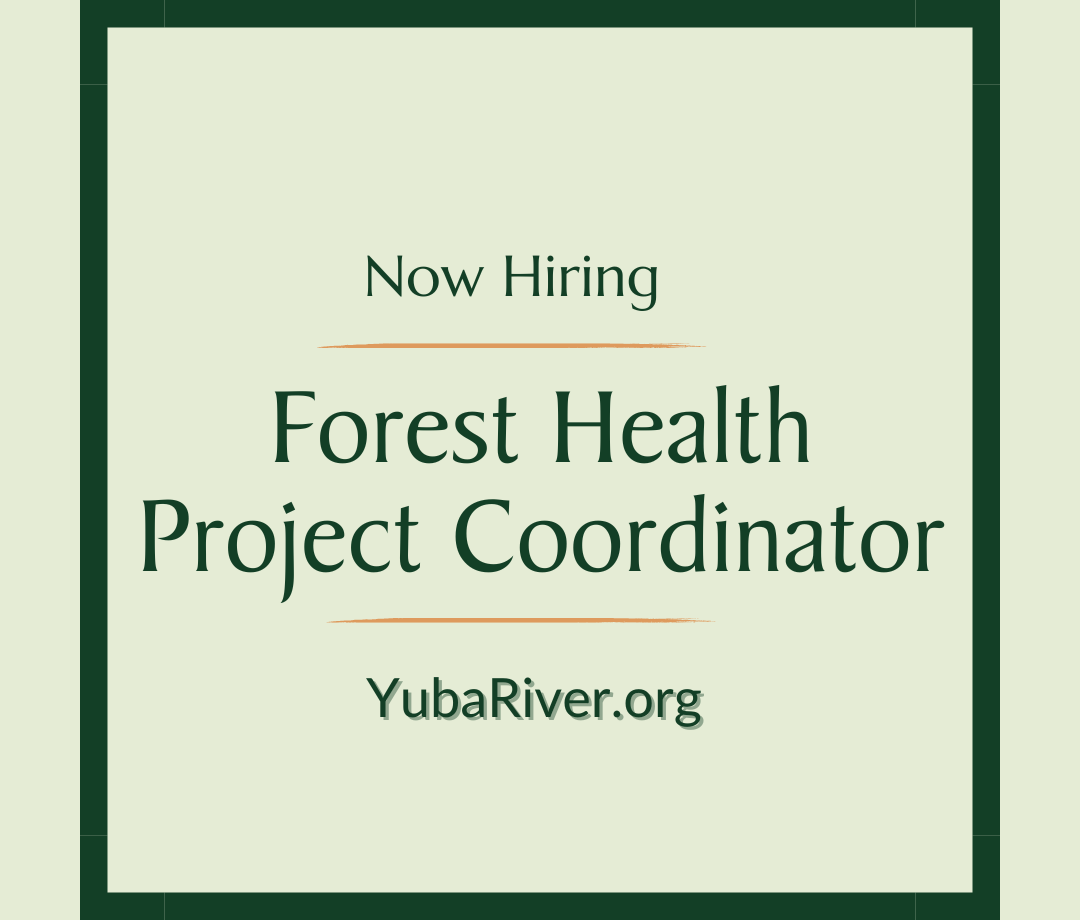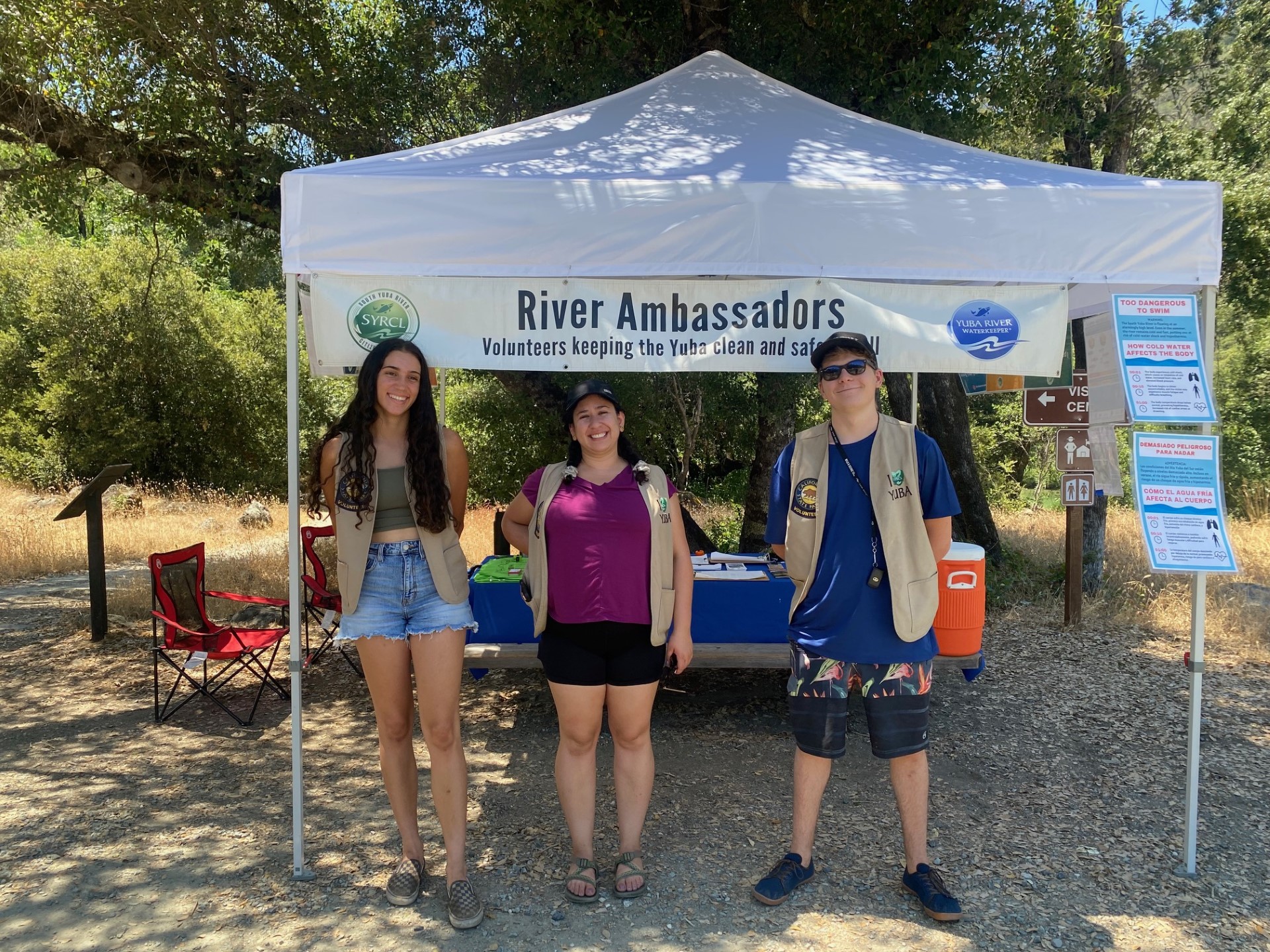Restoring the Quaking Aspen
SYRCL is working to restore aspen in the Yuba River watershed because they provide habitat for numerous species of insects, birds, and mammals and help improve water quality. You can help us by getting involved next weekend. Learn more about SYRCL’s restoration project and how to sign up below.
What is the role of aspen?
Although aspen communities comprise only a small fraction of Sierra Nevada forests, they provide an outsized role in biodiversity, similar to riparian areas.
In addition to habitat, aspen stands provide ecosystem services that affect surrounding ecological communities both directly and indirectly including landscape-scale fire resilience, and improved water quality (Shepperd et al 2006; Krasnow and Stephens, 2015).
Beyond their ecological significance, there is also the experience they offer us. There is nothing quite like standing in a healthy aspen stand. Imagine your shoes muddied by the cool wet soil while you listen to a symphony of songbirds going about their day, harvesting insects, and returning to their soft cavity nests.
Surrounding you are tall trees with vibrant white bark. Their young sprouts emerge around your feet with their bright green leaves, warmed by the sunny open canopy. In a true performance of their name, as the wind passes through the grove, the aspen leaves quake the same way they have for thousands of years.
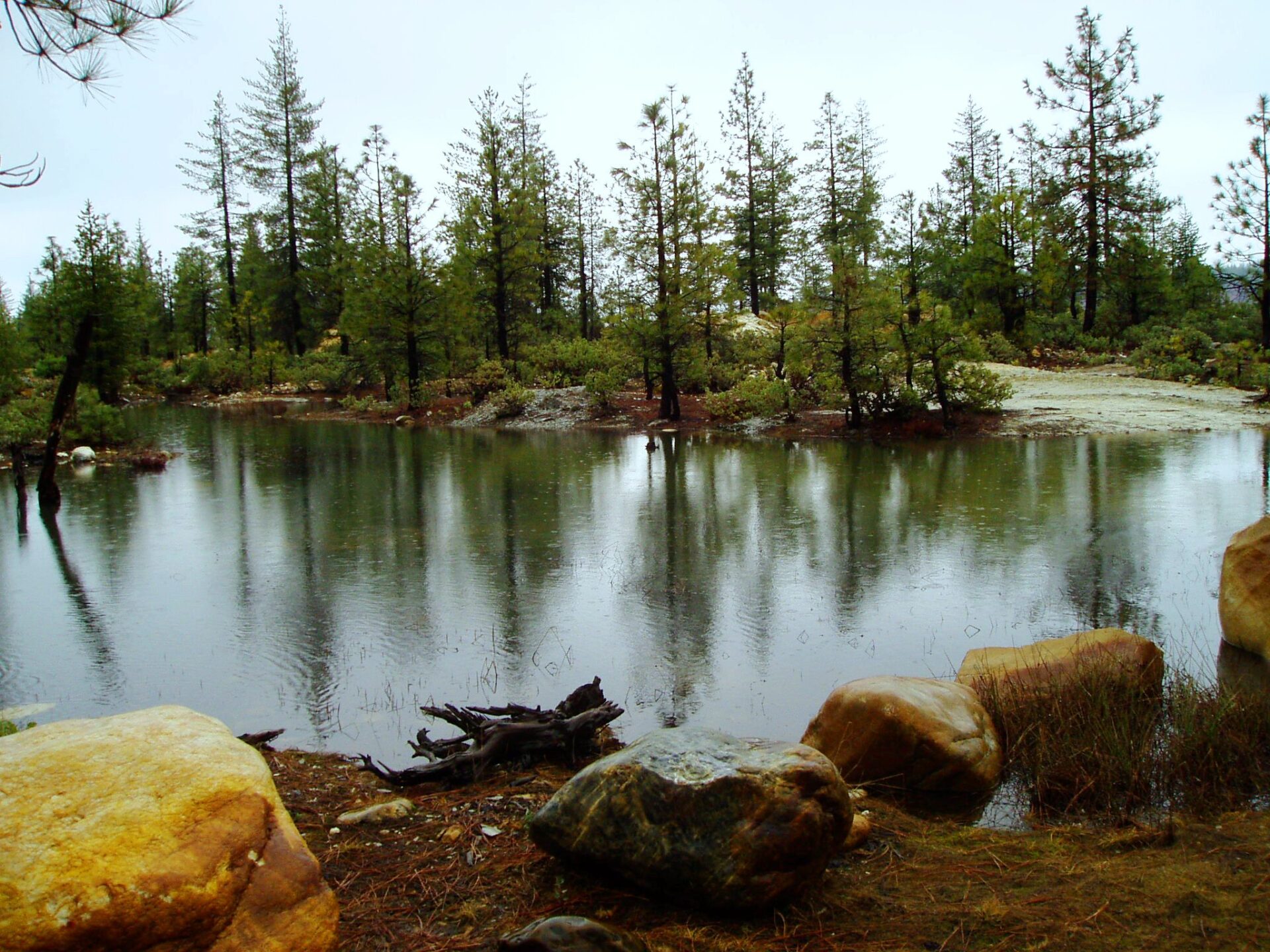
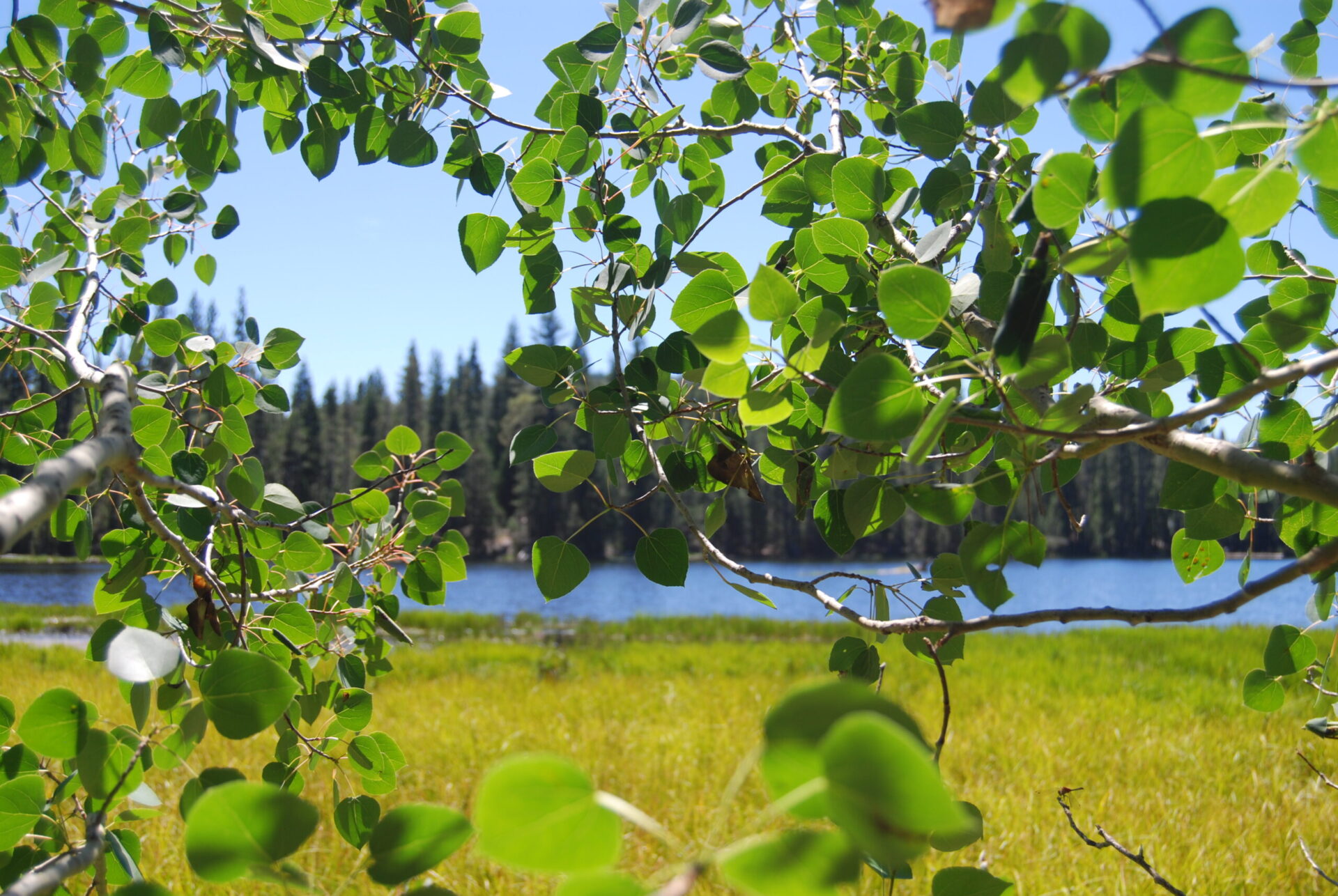
Quaking aspen (Populus tremuloides) populations, although vigorous in places like Colorado, Utah, and the eastern side of the Sierra Nevada, are in decline within the Yuba River watershed. According to one former Tahoe National Forest Wildlife Biologist, aspen is the single resource at greatest risk of loss in the watershed, particularly the unique genetic combinations present. This is one of the major reasons why aspen restoration actions are in a critical need.
Project Description: With funding from the CA Wildlife Conservation Board, SYRCL kicked off the first field season of the Yuba River Headwater Aspen Restoration Assessment and Planning Project. The objective of this project is to plan for the restoration of at least 100 acres of the most critically threatened aspen vegetation in the watershed. The first step is to assess the current state of aspen in the watershed and SYRCL wants to get volunteers involved in this crucial task.

Volunteer Role Description: SYRCL is hosting Aspen Volunteer Days to bring people together to assess and monitor aspen within the Yuba River Watershed. Volunteers can expect to spend the day (10 am to 2:30 pm) assessing aspen health, including identifying tree diseases, looking out for excessive browsing and conifer encroachment, observing regenerating aspen sprouts, and walking the perimeter of aspen stands.
Field monitoring equipment will be provided. Volunteers are expected to bring their own water, snacks, and field attire. Hiking boots or tennis shoes are recommended, as well as ample sun protection (hat, sunglasses, sunscreen, long pants, long sleeve shirt). Please bring a face mask.
Birders, botanists, and naturalists–from amateur to professional are encouraged to sign up here. Aspen stands are a truly magical place with much to appreciate.
When: Saturday, July 17th, 10am – 2:30pm
Where: Volunteers will meet near Jackson Meadows Reservoir.
Details: Detailed driving directions will be provided to volunteers who sign up. Work will wrap up by 2:30 pm.
Did you enjoy this post?
Get new SYRCL articles delivered to your inbox by subscribing to our ENews.

